Panoramic Photo Above:
Wrigley Field, Chicago

Baseball History Comes Alive Now Ranked As a Top Five Website by Feedspot Among All Baseball History Websites and Blogs!
(Check out Feedspot's list of the Top 35 Baseball History websites and blogs)
Guest Submissions from Our Readers Always Welcome! Click for details
Scroll Down to Read Today’s Essay
Subscribe to Baseball History Comes Alive for automatic updates.
As a Free Bonus, you’ll get access to my Special Report: Gary’s Handy Dandy World Series Reference Guide!
Sandy Koufax Photo Gallery
Well, as I always said about Vince Jankowski. he’s not afraid to tackle controversial subjects…and with today’s essay, it’s controversy on steroids! But, as I have also said about Vince’s essays, it’s always worth reading what he has to say, and as usual, he’s done his homework. So before you tune this one out, give Vince a chance and read this one as he takes a deep dive into the career of baseball icon, Sandy Koufax! -GL
A Deep Dive Into the Career of Baseball Icon Sandy Koufax
Warning: This essay comes from the sacrilege department. You may not like what you read!
Sandy Koufax is considered one of the greatest pitchers of all time. His record from 1962-1966, during which time he won three Cy Young Awards, is often cited as the most impressive five-year streak of any pitcher in baseball history. But, consider this: Koufax’s emergence from a wild flame thrower to a Hall of Fame hurler coincided with the Dodger’s move to Dodger Stadium in 1962. Before then, Koufax was only a prospect, one of many hard throwers who may or may not make it in the bigs. Was Koufax’s five great seasons a matter of a great pitcher finally hitting his stride or simply an above-average hurler moving to a pitcher-friendly stadium?

Koufax was only 19 years old when he commenced pitching in the bandbox that was Ebbets Field. He was 22 when the Dodgers left Brooklyn and 26 when Dodger Stadium became his home park. It can be cogently argued that Koufax’s lesser numbers at Ebbets and the Coliseum were a function of his youth rather than the ballpark where he played half his games. So, let’s look at the numbers.
Koufax had three home fields during his career: cozy Ebbets Field (1955-1957), the wholly unfit for baseball Los Angeles Coliseum (1958-1961), and Dodger Stadium (1962-1966). His won-loss records for the years in these venues were: Ebbets Field 9-10; the L.A. Coliseum 45-43; Dodger Stadium 111-34. His records for home games during that time frame were: Ebbets Field 5-3, the Coliseum 17-23, and Dodger Stadium 57-15. The Dodgers were a consistent pennant contender during Koufax’s years with the team, winning six pennants and finishing second twice in twelve years. But, Koufax was not a consistent winner until the park in Chavez Ravine opened. In addition, Koufax’s won-loss percentage in Dodger Stadium (.792) is higher than in any of the ballparks in which he pitched at least ten games except Connie Mack Stadium.

Similarly, Koufax’s ERA is lower for games played in Dodger Stadium (1.37) than in any other ballpark where he pitched more than 10 games. By comparison in 23 games at Connie Mack Stadium, Koufax’s ERA was 2.16; in 26 games at Forbes Field he pitched to an ERA of 2.26; in 28 Wrigley Field contests, Koufax’s ERA was 2.65. Analogous results were achieved at: Candlestick Park, 18 games, 3.58 ERA; Milwaukee County Stadium, 21 games 3.59 ERA; Busch Stadium, 29 games, 3.98 ERA; Ebbets Field, 32 games, 4.04 ERA; Crosley Field, 31 games, 4.13 ERA; the L.A. Coliseum, 72 games, 4.33 ERA. Granted, some of these games were pitched before Koufax’s peak. So, these numbers do not completely answer the question of whether Koufax’s success was a matter of improvement with experience or due to the venue. The stats are, however, probative.
In order to refine the sample, let’s look at Koufax’s prime years, that is, the Dodger Stadium years and compare his stats home vs. away for those years. As the following chart demonstrates, in every one of Koufax’s great seasons his ERA at Dodger Stadium was substantially lower than his ERA in away games.
1962: Dodger Stadium 1.75, away 3.53
1963: Dodger Stadium1.38, away 2.31
1964: Dodger Stadium 0.85, away 2.93
1965 Dodger Stadium 1.38, away 2.72
1966 Dodger Stadium 1.52, away 1.96
These numbers cannot simply be a function of Koufax being a better home pitcher than he was on the road. Prior to the years at Dodger Stadium, Koufax’s yearly ERAs were sometimes higher on the road (1955 and 1957 in Ebbets Field and 1959 in the Coliseum) and sometimes higher in games played at home (1956 in Ebbets Field and 1958, 1960, 1961 in the Coliseum). There is something more at play than comfort performing before your home fans.
Looking at Koufax’s stats from another angle, Koufax pitched in 17 stadiums during his career. Batters hit .176 against him in Dodger Stadium, ranking Dodger Stadium fifteenth of the 17 stadiums in which Koufax pitched in that category. His opponent’s on-base percentage (.221) and slugging average (.247) in Dodger Stadium both rank sixteenth out of 17 ballparks in those categories. His numbers for Ebbets Field (.241, .324, .419) and the Coliseum (.228, .326, .395) were far less impressive.
Factoring out Koufax’s early years produces similar results. In ballparks where Koufax pitched only in his prime years of 1962-1966, the figures are: the Polo Grounds (7 games, .203, .267, .323), Shea Stadium (6 games, .191, .247, .278), the Astrodome (5 games, .193, .244, .307). It should be noted that games in these parks were played against the expansion Mets and Astros. Yet, Koufax’s performances in those parks were below those in Dodger Stadium, pitching against all National League teams, good and bad. Clearly, Koufax was getting better results at Dodger Stadium than in other venues.
Let’s now use another metric: walks plus hits per nine innings (WHIP). Koufax’s WHIP in Dodger Stadium was 0.822, lower than in any park where he pitched more than 10 games. Comparable figures are: Connie Mack Stadium (23 games) 0.949; Candlestick Park (18 games) 1.176; Wrigley Field (28 games) 1.124; Crosley Field (31 games) 1.372; Ebbets Field (32 games) 1.378; Forbes Field (26 games) 1.209; Milwaukee County Stadium (21 games) 1.291; Busch Stadium (29 games) 1.295; the L.A. Coliseum (72 games) 1.413. Koufax’s numbers were helped by the increase in the size of the strike zone before the 1963 season, but that does not explain the disparity between his home vs. away statistics.
Further proof that Dodger Stadium was a pitcher-friendly environment is shown by the numbers of Koufax’s contemporary, Don Drysdale. Of the 13 ballparks where Drysdale pitched more than 10 games, his opponent’s batting averages, on-base percentages, and slugging averages were lowest at Dodger Stadium and his ERA was the lowest there also. His only 20-win seasons came when Dodger Stadium was his home park. He, too, came up as a 19-year-old when the team was in Brooklyn. He, too, did not hit his Hall of Fame stride until Dodger Stadium became his home ballpark.
Dodger team ERAs were also lower once the team relocated to Dodger Stadium. In the four years in the L.A. Coliseum, Dodger team ERAs were 4.47, 3.79, 3.40, and 4.04. In the first five years at Dodger Stadium, team ERAs were 3.62, 2.85, 2.95, 2.81, and 2.62.
I do not mean to denigrate Koufax’s career, only put it in perspective. His stats even in away games was surely impressive. In 207 road games (165 starts) he compiled an 84-46 record (.652) with an ERA of 3.04. His four no-hitters – three of which were thrown at Dodger Stadium – and one perfect game cannot be ignored. Nevertheless, one must wonder how good Koufax would have been had Walter O’Malley not had a dream of building a ballpark in Chavez Ravine.
Vince Jankoski
We’d love to hear what you think about this or any other related baseball history topic…please leave comments below.
Gary Livacari
Subscribe to Baseball History Comes Alive to receive email updates. FREE BONUS for subscribing: Gary’s Handy Dandy World Series Reference Guide. The site has over 1500 fully categorized baseball essays and photo galleries, now surpassing the one million hits mark with over 1,232,000 hits: https://wp.me/P7a04E-2he
(Please note: If you were previously a subscriber to the website, you may have to resubscribe due to recent technical issues. Just use the green “Follow Us” icon below to resubscribe).
Information: Excerpts edited from
https://www.facebook.com/Don-Stokes-Old-Time-Baseball-Colorizations-923346241033508









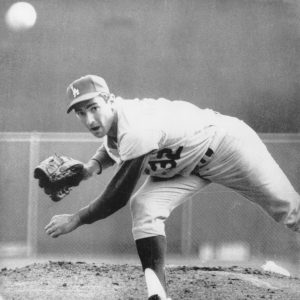




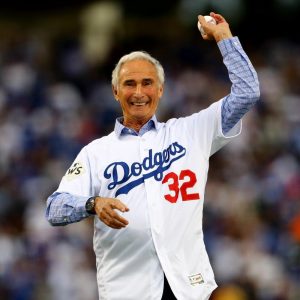
























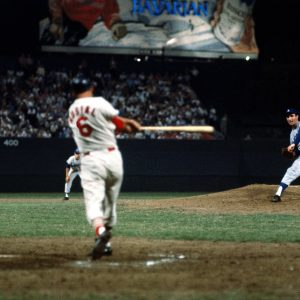

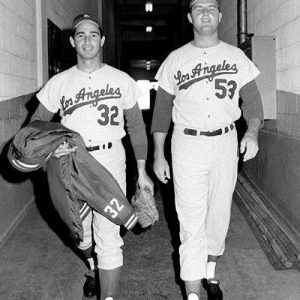
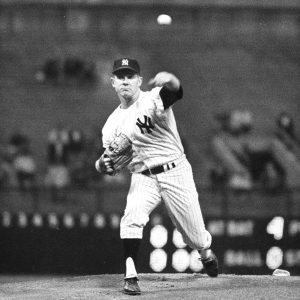



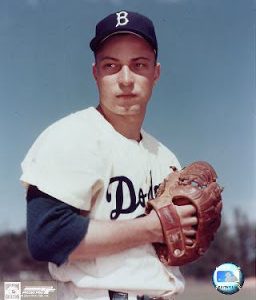
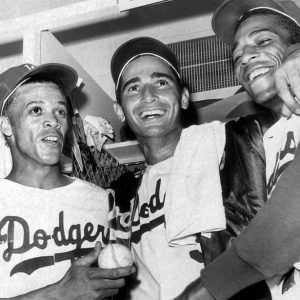


















Nice work Vince. While it is unsurprising that Koufax’s Dodger Stadium stats dwarf his others and nice job pointing out Drysdale’s performance over the same time period, it’s no less interesting!
Mark
Haha! As I said, Vince isn’t afraid to take on controversial subjects!
Very well done article. Further research would likely show that most Dodger pitchers flourished in the Chavez Ravine. Not sure who decided to make it a pitcher’s paradise but knowing how tight O’Malley was I suspect he thought giving his pitchers an edge would mean he only had to pay top dollar for pitching, and much less for hitters. That was the exact opposite of Brooklyn where the batters got the big money, and since there were more great hitters; Snider, Hodges, Campanella, Robinson, Furillo, Reese, than good pitchers, the payroll got smaller in L.A.. In the late 1990’s Koufax and I frequented the same antique dealer in Melbourne, FL. Sandy lived in Vero Beach and as I recall was looking for church pews for a barn he was re-modeling. The antique dealer told me not to talk baseball with Koufax or ask him for an autograph or he would leave the store. I abided by the owners wishes and Sandy would indeed talk antiques all day. I always wanted to ask him about his career and his sudden change from mop-up pitcher to greatness, but I never did. Never asked for that autograph either. He was very soft-spoken and a gentleman to my wife and me. Also, at the time he was searching for an old barber chair if my memory is correct. His bio lists him at 6’2″ and 210 but when I met him he seemed shorter and definitely much lighter. The antique dealer liked Sandy because he always paid cash, tipped well, and eventually signed a picture to put in the window of the establishment.
Great info Kevin! Thanks for sharing this great story about Sandy!
Kevin,
Thanks for the comment. Team ERAs generally dropped once the team moved to Dodger Stadium. For individual pitchers, the comparisons are hard to make. Stan Williams and Ron Perranoski only threw for one year in the Coliseum. Claude Osteen came later. Ed Roebuck had one good year in Ebbets Field, one good year in the Coliseum, and one good year in Dodger Stadium. Johnny Podres actually had his best year in the Coliseum.
Very interesting argument but Vince never explains why Dodger Stadium is apparently so pitcher friendly. Although I don’t know the dimensions of Ebbetts Field it is common knowledge that it was a small park but how did it compare with Dodger Stadium? And what were the dimensions of the Coliseum? And what was it about Dodger Stadium that makes it so pitcher fieldly. The dimensions? The wind? The lack of humidity? Answering these questions would be helpful in understanding the point of view presented regarding the success of Koufax.